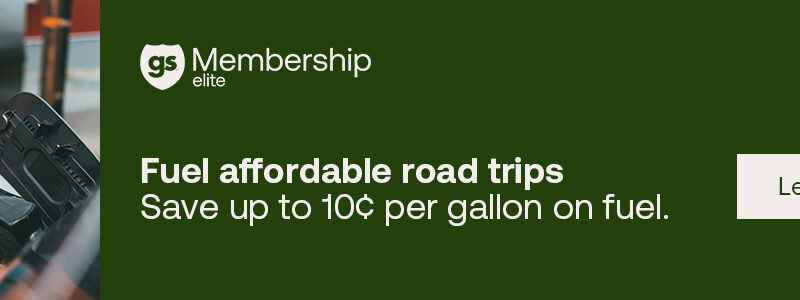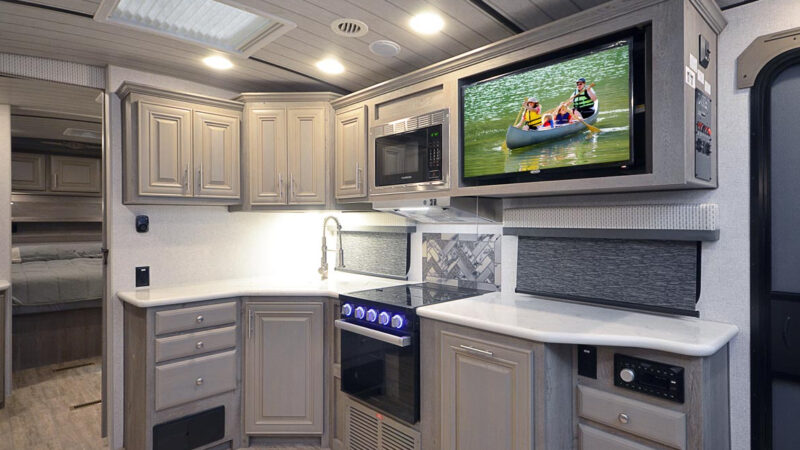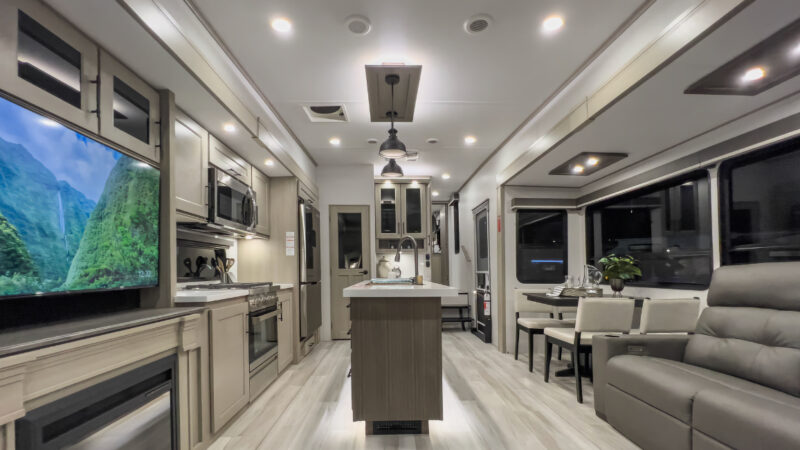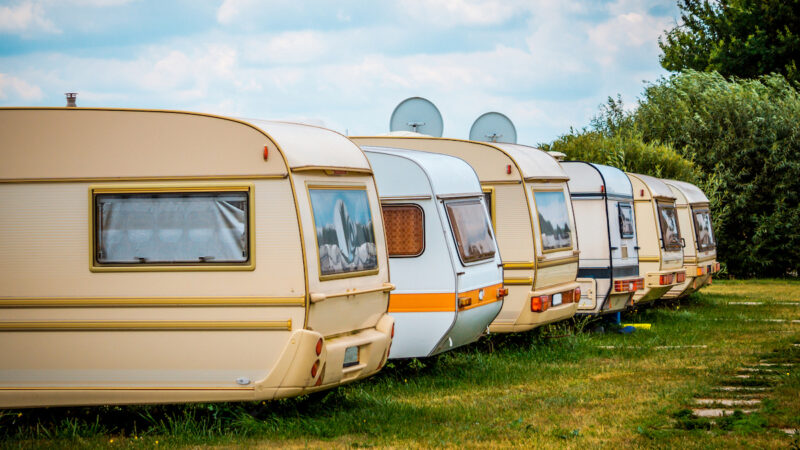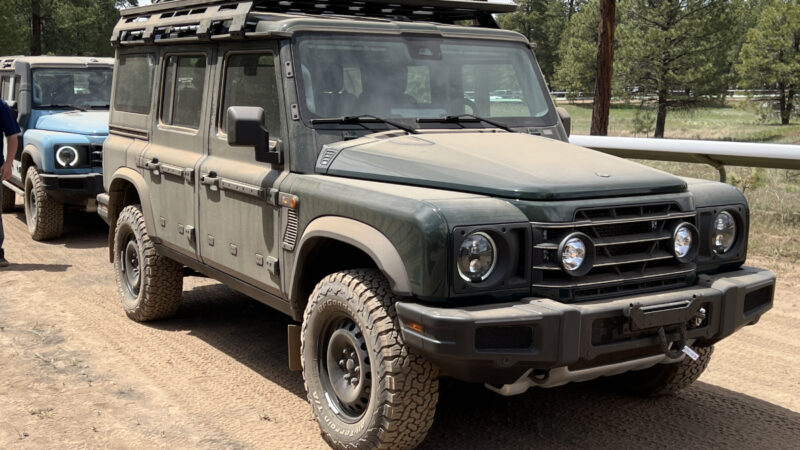The Boondock Life
“Where the heck are we gonna park this thing!?”
Crossing the state line on that maiden voyage back in 2019, this question rolled over me with a wave of anxiety.
I had been so blinded by a “just get it done” mentality while Trev worked tirelessly to finish the build of our RV that we had both forgotten to ask ourselves some pretty basic but very important questions. The main one was, “Where do you live when you’re living on the road?”
That first year taught us so much about full-time RV life. For starters, we learned quickly that campsite parking wasn’t our thing. We much prefer the freedom of living off-the-grid and boondocking in places with unique backdrops.
But that meant we were going to have to make some serious adjustments to our build to make it hookup-free.
We are now on our second RV, another homebuilt model, and absolutely love our life on the road.
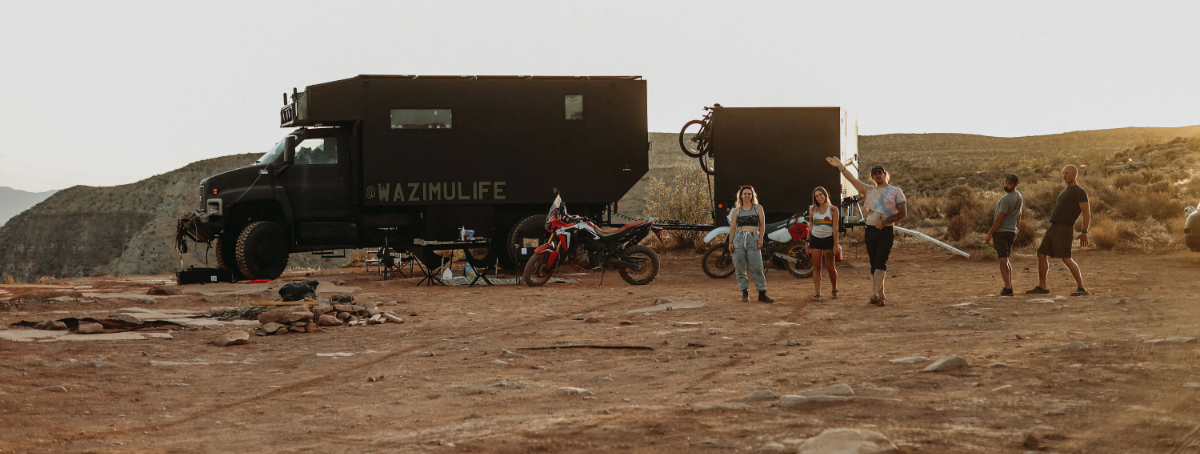
Photo Credit: Rae Smithson
Solar Panels
First, we started with solar panels. On the original build, we purchased the solar panels last when we were out of money and anxious to be done. They were useless as there was never enough power. This was a big deal in the beginning since our English bulldog, Louis, was allergic to heat. We were constantly chasing weather, running the generator, and spending money on campsites to make sure we were all comfortable. It made the lifestyle less carefree and more of a stressful chore, which made us question everything.
That’s why, on our second build (a 2008 GMC C7500 retired snowplow), neither of us squawked at the large investment or decision to make our first purchase solar panels. The 1,850 watts of solar panels, Victron solar controller and inverter, and Discover Battery 600 lithium amp-hour system is a game changer! We went from constantly checking batteries and mapping colder climates to running blenders, crockpots, and all the A/C Louis could want. We still keep our Honda 3000 generator close by as a backup for emergencies, but in the nearly two years we’ve had our second RV, we’ve only had to run it a few times out of necessity.
Lesson learned: If boondocking is your preferred way of living, don’t skimp on solar.
Fresh Water
The second priority for boondocking should be fresh water. I’d say the number-one reason nomads have to leave a spot is because they’ve run out of water. Our RV’s 75-gallon freshwater tank with a two-part filtration system and three five-gallon water jugs for daily drinking allow us to go 3–4 weeks without needing a fill-up.
Lesson learned: Be sure to keep plenty of clean water on hand.
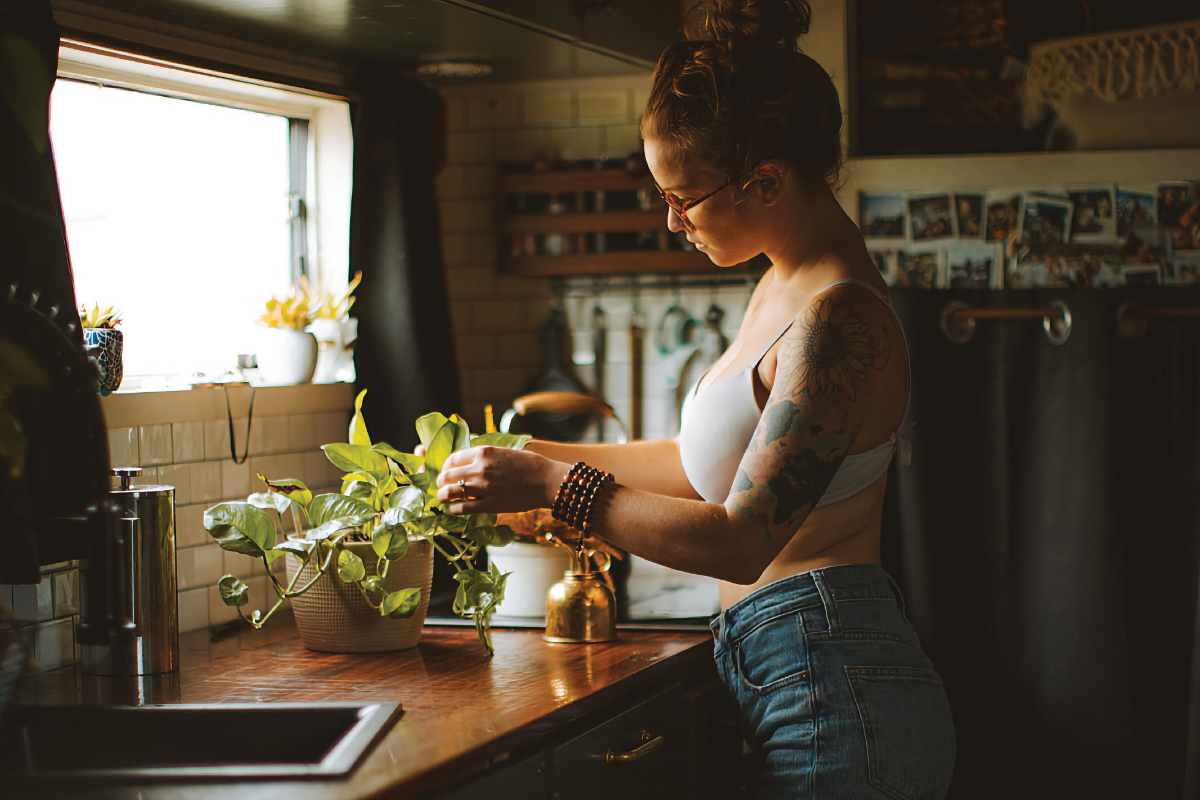
Photo Credit: Rae Smithson
Finding the Perfect Spot
While we do love when locals recommend off-the-grid hidden gems, the iOverlander app has been by far the greatest tool we’ve used when looking for spots and helpful information on boondocking.
The iOverlander app is only as good as its perfect partner, Starlink, for broadband, high-speed internet, which was one of the best investments we’ve made since living on the road. Starlink is pricey, but when I tell you it’s nonnegotiable, trust me on this. And it’s a big comfort knowing we can keep in touch with family and friends wherever we are.
Lesson Learned: A reliable internet provider is a must-have resource for us.
Safety
We didn’t skimp on safety, either. Everything on our rig is always locked, and doors double bolted. Cameras ensure that things are monitored from afar, and we sleep with a hatchet and flashlight at arm’s length. On long stretches of drives, we’re no strangers to well-lit truck stops and Cracker Barrels. Before each drive, Trev does a complete walk-through of the truck to ensure everything looks normal. And like any good driver, he always has an ear out for an out-of-place sound while we drive. We also consider all the risks for a potential parking spot.
Lesson Learned: Our RV is our home, and if anything makes us feel uncomfortable, it’s not worth the risk.
Full-time RV living is a very unpredictable lifestyle; it really forces you to roll with the punches, be a good communicator, and trust your instincts and your partner. But when it comes to the “good life,” you won’t find a better way of living. Our RV’s solar panels, 75-plus gallons of freshwater, and the iOverlander app are the three main ingredients that make boondocking a cakewalk for us.

Photo Credit: Rae Smithson
Boondocking Pro Tips
Water works. We recommend an RV with a larger freshwater tank. We use plant-based soaps so that we can recycle our water for various uses as much as possible. A two-part water-filtration system allows you to fill up the freshwater tank just about anywhere.
Everything is storage space! Utilize every nook and cranny in your RV for excess storage—steps, seats, counters, etc. Everything should have a dual-use purpose.
Black tank versus compost. Having experienced both, I have much to say on the subject. But the bottom line is that compost wins every category for us. In our first build, the idea of composting grossed me out. But our Nature’s Head composting toilet is probably in my top five favorite features about our build. We save so much water and time by never having to search for a dump station. And no, it never smells bad in our house. It’s amazing!
Network. Networking in the nomad community (particularly through social media or nomad gatherings) is going to save you lots of money, time, and frustration. This community is a wealth of knowledge. Everyone is always looking to help fellow full-timers. Whether it’s a place to park, recommendations in the area, knowledge on a breakdown, or a connection to a “good mechanic near me,” our connections have been our greatest resource.
Insulation. Wazimu 2.0’s insulation is 3¹⁄₂ inches of closed-cell foam board, which helps conserve batteries in extreme temperatures. We also have a small woodstove that allows us to heat the RV without turning on the heat pump. Trevor made the woodstove from an old propane tank he found in a junkyard. The chimney is made of steel that has a flap at the top (on the exterior) that lifts by pulling a lever from inside, similar to the exhaust pipes on a tractor.
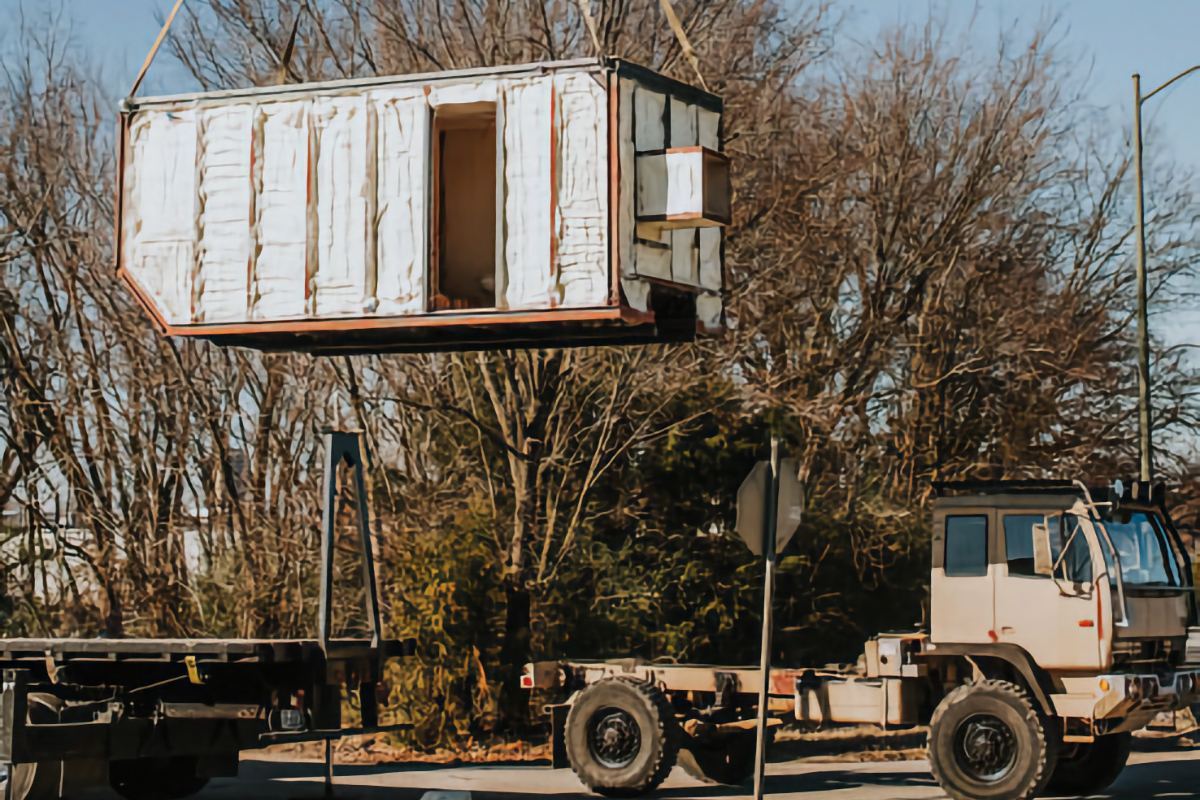
Photo Credit: Rae Smithson
How We Made It: Building the Dream
After years of dreaming, saving, and planning for a life on the road, we finally purchased our first truck in 2018, a 1998 M1078 LMTV Stewart & Stevenson retired troop carrier. We had been traveling through Uganda on a humanitarian trip when we got the email confirmation that the truck was ours! The kids in the area where we were working referred to Trevor as “Wazimu Mungaru,” which means “crazy white man” in Swahili. So we named the truck “Wazimu,” meaning “crazy.”
Trevor built the entire house on the back of the truck himself, including the steel box, frame, plumbing, electrical, carpentry, etc. Thanks to a close friend, Matt Wiley, who donated the space and tools, we were able to complete the entire thing in six short weeks! All-in, our first build cost us $40,000.
We lived in that truck for three years and traveled all over the United States. In 2021 we decided it was time for some upgrades, so we sold the Stewart & Stevenson for $80,000 and upgraded to a 2008 GMC C7500 retired snowplow and dump truck! This was a major upgrade for us, as the cab included A/C. We went straight to work on the second build, but this time around, we took our time to enjoy the building process and really thought through each piece and upgrade.
Thanks to another great friend, Robert Ashby, we had access to tools and space. All-in, the total cost for our second build was $110,000, which was more than we originally wanted to spend. But, after living in Wazimu 2.0 for two years now, there isn’t a single change we’d make. Complete with 1,850 watts of solar panels, 600 amp-hour lithium batteries (Victron system), 75-plus gallons of freshwater and filtration systems, 3¹⁄₂ inches of insulation, and an open-concept layout, we love our new home and all the places it takes us!
The post The Boondock Life appeared first on RV.com.
Source: https://www.rv.com/lifestyle-travel/the-boondock-life/


